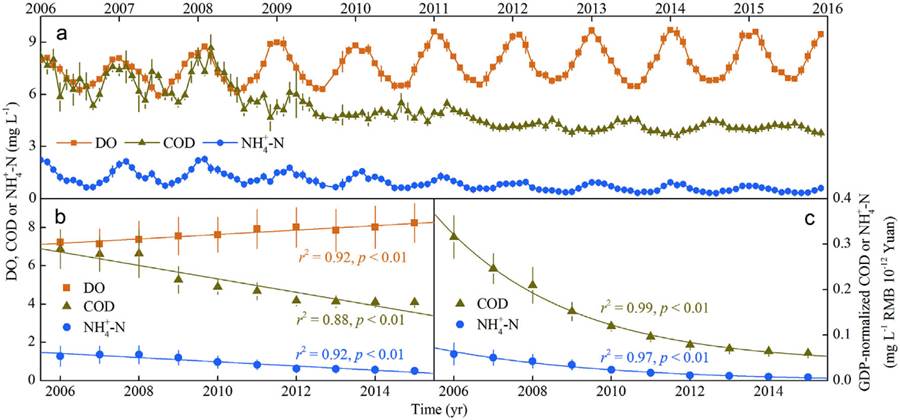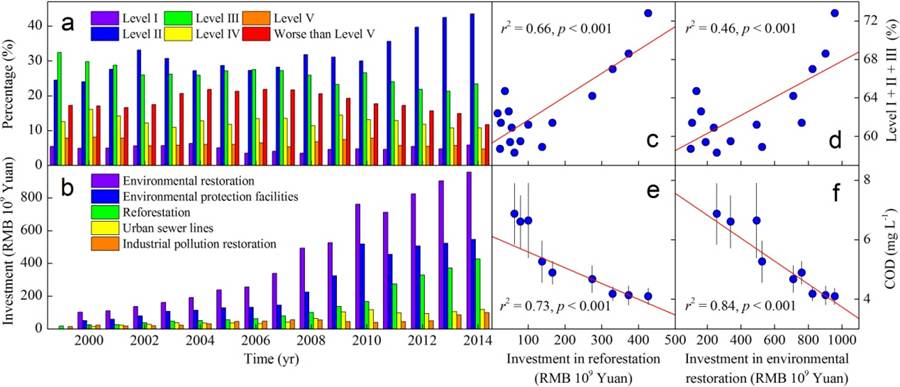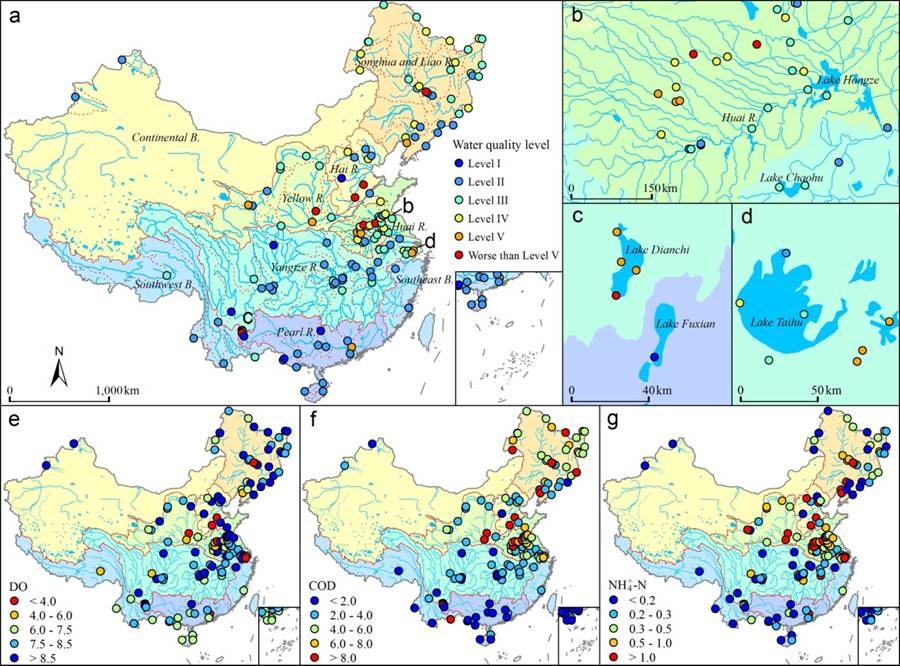Chinese Enormous Investment in Ecological Environmental Protection and Restoration in the Past Decade Greatly Improves Surface Water Quality
For a long time, surface water deterioration and lake eutrophication of China are considered as the environmental cost paid for economic development. However, in recent twenty years, China invested enormous manpower, materials and fund in ecological environment restoration. Currently, the government and the public will focus on the following aspects: how about the quality change of surface water of China in recent years under such background; what’s the response of water quality change to enormous investment in ecological environmental remediation? With the joint funding of National Outstanding Youth Fund and other projects, Zhou Yongqiang, a doctoral student with Zhang Yunlin Research Group of Nanjing Institute of Geography & Limnology, discussed the surface water quality change of China in recent ten years and the quantitative response relationship with ecological environmental restoration investment led by the government based on change of chemical oxygen demand (COD), dissolved oxygen (DO) and ammonium (NH4+-N) of 145 watershed monitoring sites in China from 2006 to 2015 by week and combined with the relevant data in the field of ecological environment in recent 20 years. The research achievements are published in the Water Research, a top journal in the field of environmental science and water resources (Water Research, 2017, 118: 152-159).
The research results show that the water quality was found to be poorest in the North and the Northeast China Plain, which corresponds to the highly-developed industrialization and urbanization level of these areas, a higher gross domestic product (GDP) and higher population density. There are significant positive relationships between COD of all monitoring sites and land use types (mainly including urban impervious surface and cropland) with strong people activity influence in corresponding basin areas, GDP, and population density (p <0.001). The surface water DO increased greatly but COD and NH4+-N concentrations decreased obviously. Especially, in recent ten years, the GDP-normalized COD and NH4+-N concentrations of surface water exponentially decreased. It means: China’s economic development way has been changed greatly; GDP-normalized pollutant generation decreases greatly; main pollutant concentrations of surface water do not increase but decrease under high-speed economic development background; current economic development is no longer at the expense of the environment. It also shows that, in the past ten years, obvious achievements have been made by China in the field of environmental protection and ecological environmental restoration. The above research achievements provide scientific support for China's environmental governance in the future and also provide a useful reference for other developing countries in coordinating economic development and environmental construction.

Fig. 1 Mean water quality levels (a-d) of 145 monitoring sites from 2006 to 2015 and spatial distribution of dissolved oxygen (DO, e), chemical oxygen demand (COD, f) and ammonium (NH4+-N, g) (Image by NIGLAS)

Fig. 2 Weekly (a) and yearly (b) change of DO, COD and NH4+-N at 145 monitoring sites from 2006 to 2015 and yearly change (c) of GDP-normalized COD and NH4+-N concentration of surface water (Image by NIGLAS)

Fig. 3 Mean water quality levels (a) within the section of China’s river of more than 110,000km, environmental restoration investment (b) as well as the linear relation (c-f) between environmental restoration investment and water quality level and chemical oxygen demand (COD) (Image by NIGLAS)
Linkage:
http://www.sciencedirect.com/science/article/pii/S0043135417302981 
https://www.researchgate.net/publication/316145293_Improving_water_quality_in_China_Environmental_investment_pays_dividends
